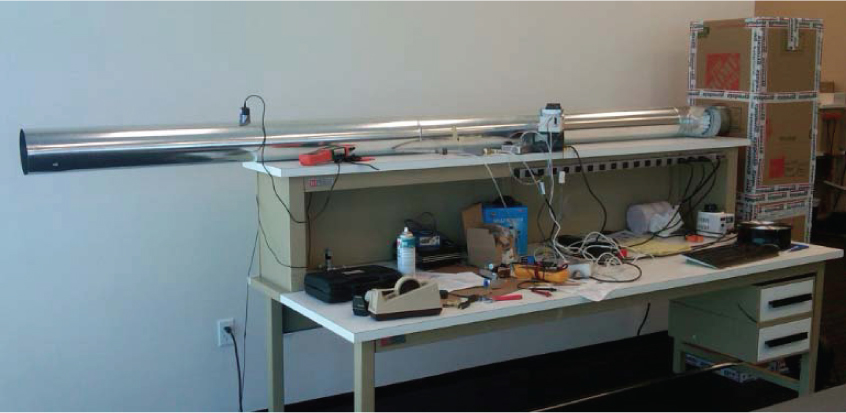Chapter 17Design of Miniature Sirens
We have surveyed a range of MWD wind tunnels designed with different degrees of sophistication and costs for different objectives. When torque, signal strength, erosion and “stable open versus stable closed” are the only properties of interest, a short wind tunnel as simple as in Figure 17.1 will suffice. In this chapter, we introduce very, very simple and inexpensive means for rapid signal and torque evaluation. As discussed, sirens may be prone to jamming – however, when they are not (so that blockage resistances are low), testing is less expensive because blower requirements are less severe. Positive displacement pumps will not be necessary and design trends can be identified accurately – for smaller sirens, leaf blowers and hair dryers have been used successfully for applications like signal strength and torque extrapolation versus flow rate.

Figure 17.1. Simple desk-top test fixture.
17.1 Siren flowmeter applications.
We emphasize that the “mud” sirens used in MWD telemetry are also useful for industrial applications outside of the petroleum industry. For example, turbosirens can be cleverly used as flowmeters that provide rate and fluid density information – rotation rates are proportional to volume flow rate while sound amplitudes are directly proportional to fluid density. Flow rate versus rpm trends obtained in the wind tunnel ...
Get Measurement While Drilling, 2nd Edition now with the O’Reilly learning platform.
O’Reilly members experience books, live events, courses curated by job role, and more from O’Reilly and nearly 200 top publishers.

